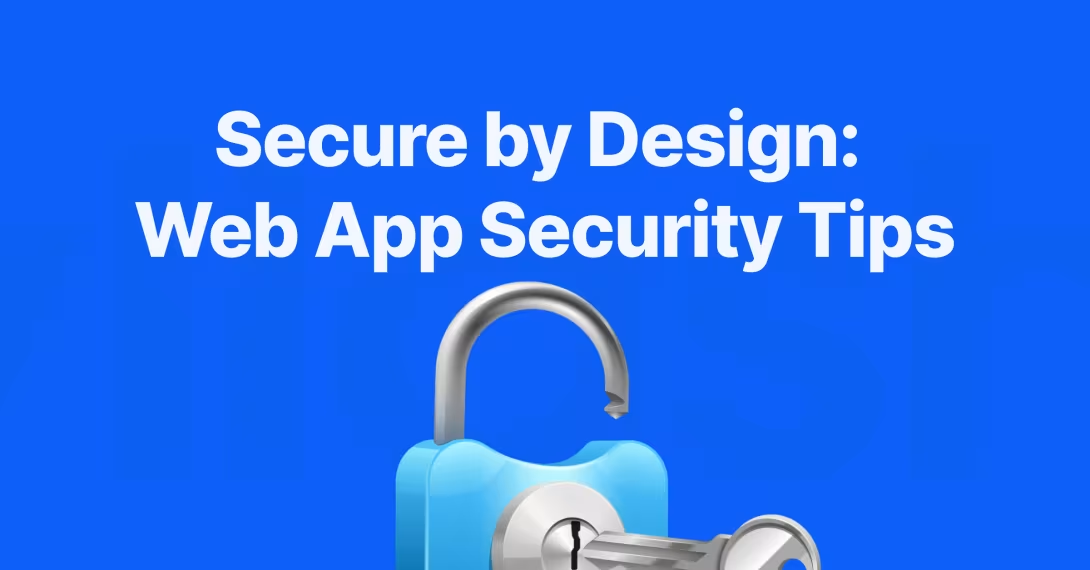Secure by Design: Web App Security Tips for Developers and Teams
Security isn’t a feature but a foundation. In an era where data breaches and cyberattacks are growing faster than frameworks, building secure web applications isn’t optional. It’s a necessity.
At Myllash Web Services, we don’t treat security as a last-minute add-on. We bake it into every project, from the first line of code to final deployment. This approach (known as “Secure by Design”) ensures that security principles guide our architecture, workflows, and culture.
Why Build with Security from the Start?
Because retrofitting security is like putting locks on the door after a break-in.
Here’s what Secure by Design helps you achieve:
- Early identification of vulnerabilities
- Lower development and compliance costs
- Improved trust and brand reputation
- Regulatory alignment (e.g., NDPR, GDPR, PCI-DSS)
Whether you’re working on fintech platforms, e-commerce apps, or public portals, secure code is good business.
Tips to Fortify Your Web Application
Let’s walk through a modern security playbook for developers and product teams.
1. Use Secure Frameworks
Start strong. Choose frameworks that:
- Are actively maintained
- Have built-in defenses against common vulnerabilities (like CSRF, XSS)
- Offer security patches and community support
Examples:
- Laravel for PHP
- Django for Python
- Express with Helmet for Node.js
- Drupal with built-in access controls and input sanitization
At Myllash, we specialize in secure implementations with decoupled Drupal + React, ensuring a strong front- and back-end foundation.
2. Enforce HTTPS Everywhere
Always use SSL/TLS encryption. Without HTTPS:
- Data sent between your server and client is exposed to interception
- Users may get browser warnings
- Google may penalize your SEO ranking
Bonus: Use HSTS headers to force HTTPS and prevent protocol downgrade attacks.
3. Validate All Inputs
Never trust user input, even if it looks harmless.
Security risks like:
- SQL injection
- XSS (Cross-site Scripting)
- Command injection
… often start with poorly validated or unsanitized data.
Always validate on both:
- Client-side (for UX)
- Server-side (for security)
4. Implement Strong Authentication
Authentication is your app’s first line of defense. Best practices include:
- Multi-factor authentication (MFA)
- OAuth 2.0 or OpenID Connect for third-party auth
- Secure password hashing (e.g., bcrypt, Argon2)
Never store passwords in plain text.
Always use rate limiting and CAPTCHA for login endpoints.
5. Limit User Privileges
Follow the Principle of Least Privilege:
- Only give users access to what they need and no more.
- Create roles and scopes for different access levels (e.g., admin vs editor vs viewer)
This reduces damage if an account is compromised.
6. Regularly Update Dependencies
Open-source packages power most apps today, but they’re also common attack vectors if not maintained.
Use tools like:
npm auditoryarn audit- Snyk, Dependabot, or Renovate for automated alerts
Tip: Maintain a regular dependency review cycle, monthly or with each deployment.
7. Monitor and Log Activity
Logging helps detect unusual activity and enables post-breach investigation.
Best practices:
- Enable audit logs for logins, password resets, data access
- Use tools like ELK Stack, Sentry, or CloudWatch
- Don’t log sensitive data (e.g., passwords, tokens)
Logs should be stored securely and rotated regularly.
The Human Element: Training Your Team Matters
Even the most secure code can be undone by weak processes or habits.
Train your developers and staff to:
- Recognize phishing and social engineering
- Follow secure deployment practices
- Store and handle credentials properly (use environment variables or secrets managers like AWS Secrets Manager or Vault)
At Myllash, we run periodic internal security reviews and knowledge sharing sessions to keep our team sharp.
Security Isn’t a Checklist - It’s a Mindset
You can’t build security in a sprint. But with a culture of secure coding and smart design decisions, you can make your app resilient by default.
Secure by Design isn’t just about preventing disaster, it’s about:
- Respecting user trust
- Complying with regulations
- Future-proofing your product
Need help securing your app? Talk to our team or book a free code audit.
FAQs About Web App Security
Q: Should I always use third-party auth providers like Google/Facebook?
A: Not always, but they offload risk if implemented correctly. Consider your user base and compliance requirements.
Q: How do I test if my app is secure?
A: Use static code analysis tools, penetration testing, and frameworks like OWASP ASVS.
Q: Can Myllash help migrate my app to a secure infrastructure?
A: Yes we specialize in AWS cloud migration, secure DevOps, and app hardening.

Comments